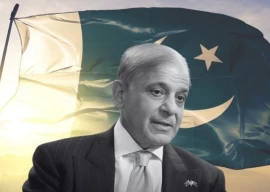
Perhaps we should talk until a certain point and no more. Just imagine spending all that money and emotions on constructing a peace narrative through Track-I and Track-II channels, only to be overtaken and upstaged by a terrorist attack. Pakistan-India peace talks have become a cyclic process: tension followed by running around to initiate talks, then resumption of talks, then arriving at an agreement that we are about to have a breakthrough in talks, but then a terrorist attack to subvert all that happened in the past. We have witnessed this cycle at least twice in the recent past. First, Atal Behari Vajpayee’s famous visit to Pakistan, followed by the signing of the Lahore declaration, which was then followed by the Kargil crisis. Later, after the two neighbours scared the world blue with a possible eruption of a nuclear war and stood, ‘eyeball-to-eyeball’ for eight long months, the leadership agreed to talk about talks. Then we saw that talks progressed to the extent that Pervez Musharraf pulled out a possible resolution to the Kashmir issue out of his hat. However, the direction of the ‘winds of change’ was turned around very soon after the Mumbai attacks. The massive vilification campaigns by the media that followed the incident completely turned the tables. Now, even the Musharraf who wanted to change regional politics for good has proverbially gone to sleep.
The primary lesson from the above is that this time the governments should talk, but not too seriously, lest it worries the major stakeholders in violence and they upstage the peacemakers by planning another terrorist attack. This would, however, further the careers of many, especially those in the media who will busy themselves stoking fires of hatred and suspicion, local and international arms suppliers, and the defence establishments. Clearly, neither side has managed to convince their respective warmongers of the greater worth of building peace. The establishments continue to stay clear of any ‘aman ki asha.’
The rather weak peace constituency faces a tricky situation in conditions where we now have another layer of stakeholders in determining the direction of peace and conflict: i.e. non-state actors. On Pakistan’s side, a few major militant outfits and various secret Islamic associations — some working for establishing a khilafat in the country and then expanding it in the region and adjoining regions — are part of the list of stakeholders which are inclined to upstage any forward movement. My poet friend Harris Khalique calls these forces the “Islamic Trotskyites”. I would argue that these forces look more like Islamic Stalinists who want to take the world by force and expand themselves, not on the basis of ideology but on the basis of militant and military force. Given the law of averages, we should expect another terror attack in the next six to eight months.
Over the past couple of decades, the internal drivers for peace and stability in the region have almost vanished. Count the number of people who go to light candles on the Pakistan-India border. The Islamic Stalinists would have by now compiled a list of these peaceniks who could be threatened at an appropriate moment. If not, they could always borrow the list from Jamaat-e-Islami Senator Farid Paracha. The reason that these obscurantist forces will thrive, at least for a while, is due to the fact that Pakistan and India have failed to build stakes in each other. We really don’t know each other beyond images of violence. In our case, the theory of common culture creating peace has failed. Trade and greater people-to-people dialogue may open possibilities. But for that to happen, the key stakeholders have got to have faith in the peace option. Until peace is seen as critical for our immediate survival, neither side will budge. This means that, for the moment, we will witness yet another period of tactical détente. Peace in the subcontinent will only come through a new vision, or after greater bloodshed.
Published in The Express Tribune, February 20th, 2011.














COMMENTS
Comments are moderated and generally will be posted if they are on-topic and not abusive.
For more information, please see our Comments FAQ